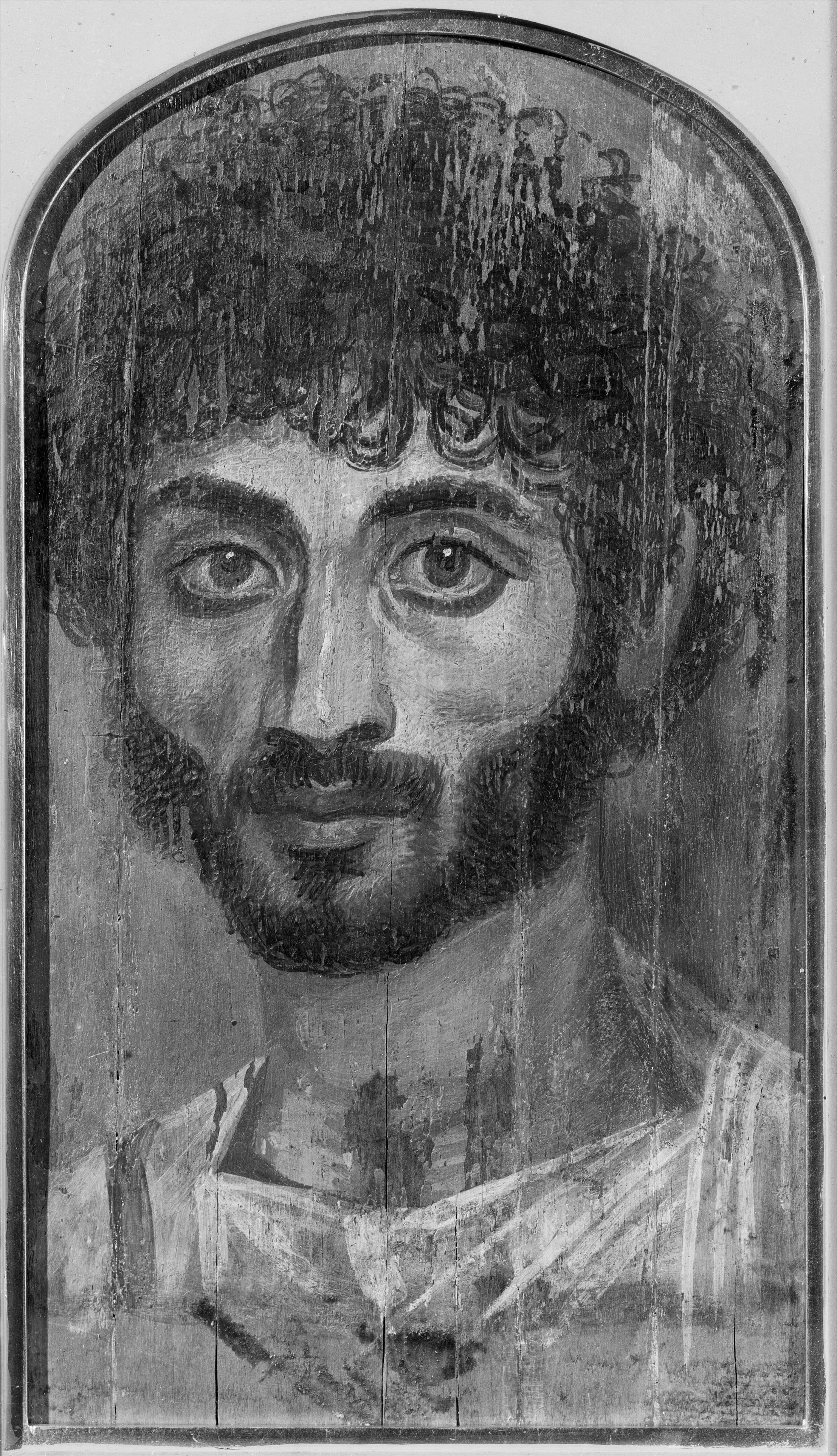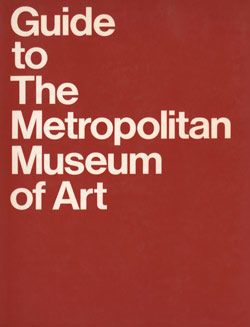Portrait of a thin-faced, bearded man
Roman Period
Not on view
The term encaustic designates painting in which beeswax is mixed with pigments. The technique was first used by Greek painters of the fifth and fourth centuries B.C. Ancient descriptions are difficult to interpret, and Egyptian mummy portraits--the only works in the medium surviving from antiquity--have not yet been analyzed extensively. Therefore, many questions concerning the details of the techniques used by mummy-portrait painters remain open, although the work of a few scholars and modern artists who paint in encaustic has provided some insight.
The first step in producing a mummy portrait was to sketch the outlines of face and garment on a wood panel that had been prepared with distemper, transparent glue, or dark wax. Then, a mixture of beeswax with powdered pigments was prepared. The wax could be used hot or cold. When used in molten state, the wax was either pure or supplemented with resin, glue, egg, gum, or oil. The molten beeswax/ pigment mixture was laid on quickly with long even brushstrokes, employing a thinner mixture for the background and garments and thick creamy paste-like
paints for the facial features. When the wax cooled, a hard tool was used to blend the various flesh tones of face and neck.
When used cold, the wax had to be made suitable for painting by a process called emulsification, in which alkalis were added that allowed the wax to be suspended in egg or oil. The ancient writers appear to refer to this as "Punic wax." Emulsified wax paints are said to dry more slowly than molten wax paints, giving the painter greater control, and time to correct and adjust during the painting process. Mummy portraits that show only brushstrokes, no hard tool marks, are thought to have been created with emulsified cold wax. Many modern artists who paint in encaustic actually employ a heated tool to fuse paints, hence the term encaustic, which means "burnt in." Ancient painters probably did not use such a technique.
Although the panel shape and palette of this painting and 09.181.2 are very similar, differences in the hair and beards suggest that the portrait of the man with the mole (09.181.2) is about a generation earlier than the portrait here. This man's body is turned more directly toward the viewer. He has bushy black hair, large round eyes, tawny skin, and a thick beard that emphasizes his emaciated cheeks. The use of light and shadow on various parts of the face and neck is very skilled.
Link to the Artist Project
Y.Z. Kami on Egyptian mummy portraits
This image cannot be enlarged, viewed at full screen, or downloaded.
This artwork is meant to be viewed from right to left. Scroll left to view more.







